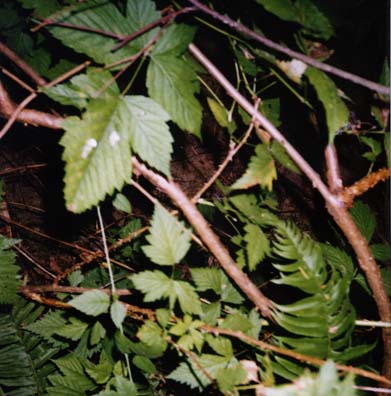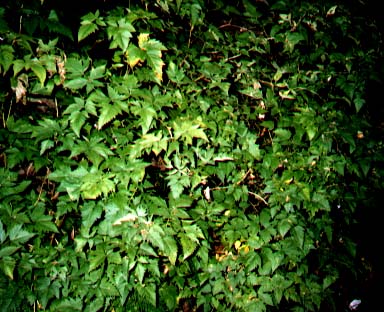


General Species Description
- Salmonberry is a deciduous shrub that can grow up to four meters tall. It has erect to arching, thorny, woody stems with thin shredding bark.
Leaves
- Rubus spectabilis leaves are pinnately compound with three to five leaflets that are dark green, toothed around the edges, and have tapered to pointed tips.
Inflorescence/Flowers
- Salmonberry flowers are pink to red and two to three cm across. They can be borne singly or in pairs and have oval petals that are 1.3 to 2.2 cm long. They bloom from April to July.
Fruits
- The edible fruits are bright orange, red, or yellow, and they form in rasberry like clusters. They are fleshy and range from tart to very sweet.
Habitat
- Rubus Spectabilis is found in moist woods, along stream banks, on wet slopes, and in low wetlands. They can grow individually or in dense thickets. Alnus rubra, rubus parviflorous, and ferns are also frequently found in these locations.
Range
- Spectabilis ranges from northern California all the way up to Alaska. It is usually only found west of the Cascades. It is common all throughout northwestern Oregon along creeks, rivers, and in moist woods.
Similar Species
- Rubus parviflorous is found in similair habitats, but is easily distinguished by it's broad, velvety, simple, and lobed leaves. Blackberry species have significantly more thorns. Physocarpus capitatus has a similair shredding bark, but does not have any thorns and has palmately lobed leaves.
Ecological Value
- Rubus spectabilis is easily transplantable, making it excellent for created wetlands. It's early blooming flowers are important for bees and hummingbirds. The fruits are eaten by racoons, chipmunks, squirrels, and many birds. Leaves are eaten by deer and rabbits. Dense thickets of Rubus spectabilis' thorny branches provide excellent cover for songbirds.
Human Value
- Salmonberry is collected widely today, and was an important food source for Native Americans.
References
- Cooke, Sarah Spear, ed. A Field Guide to the Common Wetland Plants of Washington and Northwestern Oregon. 1997. Seattle Audubon Society. Seattle, Washington. Guard, B. Jennifer. Wetland Plants of Oregon and Washington. 1995. Lone Pine Publishing. Vancouver, B.C., Canada.
This page was created by: Braden Hanna, August 1998
Return to Northwest Oregon Wetland Plants Project